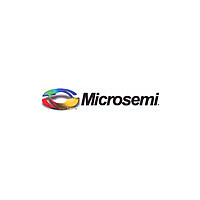ml6692 Microsemi Corporation, ml6692 Datasheet - Page 13

ml6692
Manufacturer Part Number
ml6692
Description
100base-tx Physical Layer With
Manufacturer
Microsemi Corporation
Datasheet
1.ML6692.pdf
(21 pages)
Available stocks
Company
Part Number
Manufacturer
Quantity
Price
Company:
Part Number:
ml6692/305CQ
Manufacturer:
EXPLORE
Quantity:
160
Part Number:
ml6692/305CQ
Manufacturer:
MICROLINEAR
Quantity:
20 000
Part Number:
ml6692CH
Manufacturer:
MICROLINEAR
Quantity:
20 000
Company:
Part Number:
ml6692CQ
Manufacturer:
ML
Quantity:
5 510
Company:
Part Number:
ml6692CQ
Manufacturer:
ZILOG
Quantity:
5 510
Part Number:
ml6692CQ
Manufacturer:
ML
Quantity:
20 000
does not detect or correct errors in the polarity of fast or
normal link pulses.
USING THE ML6692 WITH AUTOMATIC LINK
CONFIGURATION
The ML6692 supports automated link protocol negotiation
and configuration. In the ML6692, the auto negotiation
state machine checks the receive signal and detects the
presence of link pulses in bursts or singly. The auto
negotiation state machine then updates the status register
in the management logic, and forces the receiver and
transmitter to perform the appropriate function, depending
on the remote link partner and local port capabilities.
If FLP (fast link pulse) bursts are detected, the auto
negotiation state machine disables all protocol-specific
link detection and drives the transmitter with answering
FLP bursts. The auto negotiation state machine then
enables the highest common denominator protocol
between the local port and the remote link partner.
If the highest common denominator technology is
100BASE-TX, the ML6692 100BASE-TX receiver is
enabled. If the highest common denominator technology
is 10BASE-T, the auto negotiation state machine disables
the ML6692 100BASE-TX receiver and enables 10BASE-T
output from the ML6692’s transmitter. If the highest
common denominator technology is 100BASE-T4, the
ML6692’s transmitter and receiver are disabled and the
external 100BASE-T4 transceiver is enabled.
The ML6692 supports the parallel detection function by
checking simultaneously for normal or fast link pulses,
100BASE-TX signal activity at TPINP/N, or indication of
100BASE-T4 activity from the external 100BASE-T4
transceiver. If one of the locally supported protocols is
detected, that protocol is enabled and all others are
disabled. If the local port lacks 10BASE-T capability and
NLPs are detected, the local auto negotiation state
machine disables transmission of all link pulses to force
the far-end station into link fail, and restarts auto-
negotiation.
The ML6692 takes a number of specific actions depending
on which supported technology is selected. If the
100BASE-TX technology is selected, the ML6692 switches
its clock recovery circuit from tracking the local 125MHz
bit clock to tracking the equalized, decoded receive
signal, descrambles, decodes and finds the packet
boundaries of the signal, asserts RXDV, and presents the
decoded receive data nibbles at RXD<3:0>. The ML6692
will also drive 10BTLNKEN and T4EN high to deactivate
external 10BASE-T and 100BASE-T4 transceivers. If the
100BASE-T4 transceiver detects activity, it will drive the
ML6692’s T4FAIL pin high and the ML6692 will place its
receiver and transmitter in an idle state, and will drive
10BTLNKEN high.
FUNCTIONAL DESCRIPTION
(Continued)
With MII Management register bit 0.12 = 0 (auto
negotiation disabled) the ML6692 can be forced into a
certain mode using bits 0.13 (speed select), bit 0.8
(duplex mode), and pin T4FAIL, as shown in the following
table.
ML6692 PHY MANAGEMENT FUNCTIONS
The ML6692 has management functions controlled by the
register locations given in Tables 2–6. There are five 16-bit
MII Management registers, with several unused locations.
Unused locations are generally reserved for future use.
Register 0 (Table 2) is the basic control register (read/
write). Register 1 (Table 3) is the basic status register
(read-only). Register 4 (Table 4) is the auto-negotiation
capability advertisement register. Register 5 (Table 5) is
the auto-negotiation link partner ability register (what the
far-end station is capable of; read-only). Register 6 (Table
6) is the auto-negotiation expansion register (indicates
some additional auto-negotiation status information; read-
only). Note that status bits 1.11-1.12 (10BASE-T
capability) and 1.15 (100BASE-T4) depend on the values
programmed through the Initialization Interface. See the
initialization interface section for programming
information. The ML6692 powers on with all management
register bits set to their default values.
The ML6692’s auto negotiation status and control register
addresses and functions match those described for the MII
in IEEE 802.3u section 22. IEEE 802.3u specifies the
management data frame structure in section 22.2.4.4.
See the IEEE 802.3u Specification section 28 for auto
negotiation state machine definition, FLP timing, and
overall operation.
See IEEE 802.3u section 22.2.4 for a discussion of MII
management functions and status/control register
definitions.
SELECT MODE
SPEED DUPLEX
1
1
1
0
0
1
0
X
1
0
T4FAIL
X
X
0
0
1
100BASE-TX Full Duplex
100BASE-TX Half Duplex
100BASE-T4
10BASE-T Full Duplex
10BASE-T Half Duplex
MODE
ML6692
13













